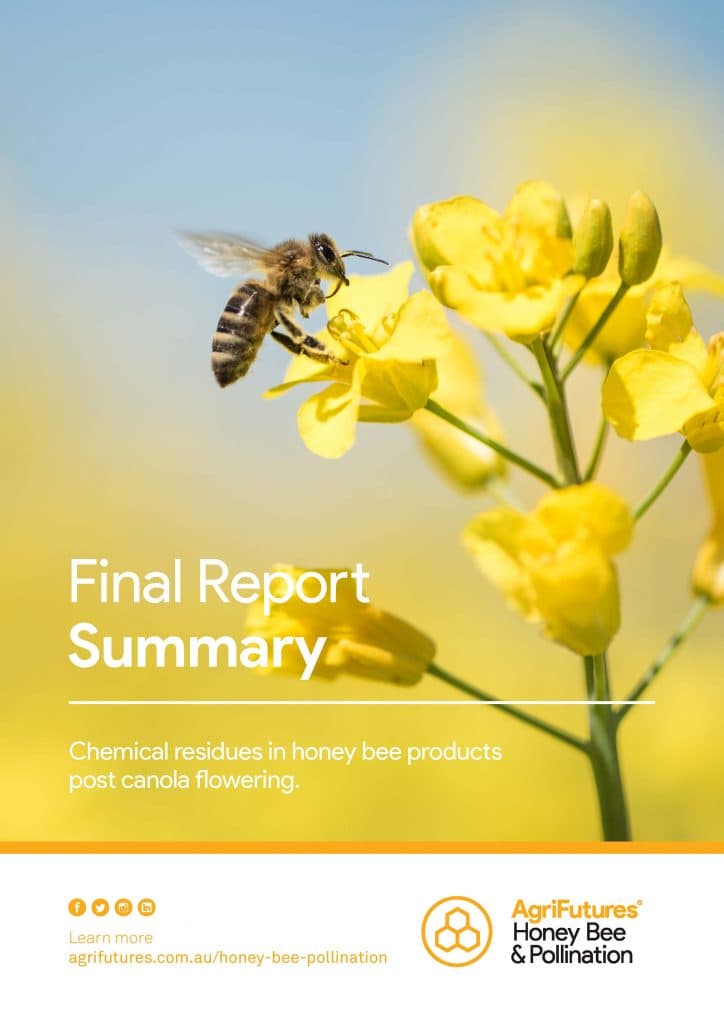Determining the impact of Varroa on virus transmission in Australian bees
This research aimed to contribute to ongoing surveillance of the Australian honey bee virus landscape as varroa establishes and spreads.
 HONEY BEE & POLLINATION
HONEY BEE & POLLINATION 
8 pages
Published: 6 May 2021
Author(s): Dr Rob Manning
Download report PDF
DownloadThe Chemical residue in beehives post canola flowering project (2014–16), carried out in Western Australia, has confirmed that canola crops grown using neonicotinoid-treated seed remain a safe and valuable foraging source for Australian beekeepers looking to build hive strength and produce a range of honeybee products from this early-flowering floral source.
Chemical analyses carried out as part of the project found trace residues of neonicotinoid in honey, pollen, wax and beebread (stored bee pollen) at levels far lower than those reported from similar studies carried out in the United States (USA) and Europe. The neonicotinoid concentrations detected did not appear to significantly affect bee health or population numbers, or have a detrimental effect on honey yields.
These results indicate that Australian beekeepers looking to utilise canola as a foraging source to build hive strength or produce honey bee products can make evidenced-based decisions without
compromising bee health or subsequent product quality.